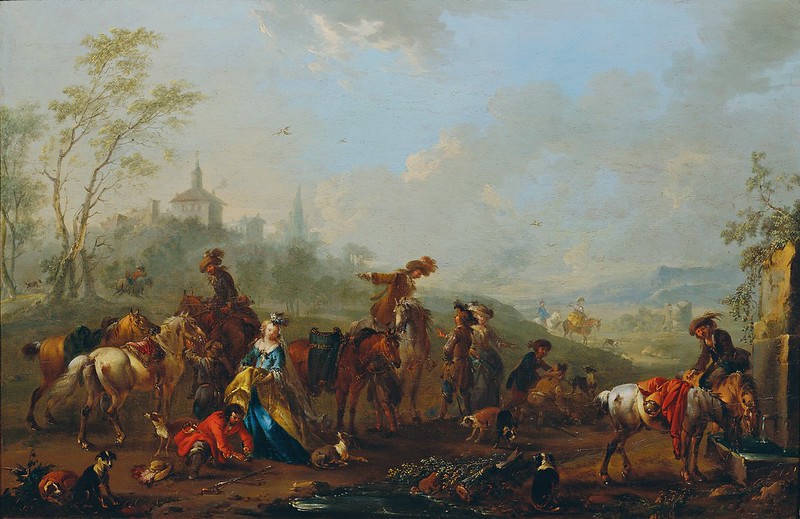František Ignác Antonín Tuma (1704-1774)
- Te Deum Laudamus à 4 (1745)
Performers: Musica Figurata
---
Czech composer. He received his first musical training from his father,
organist at Kostelec, and probably studied in Prague, at the Jesuit
seminary. According to Dlabacž he was a tenor chorister under B.M.
Černohorský at the Minorite church of St James, and he may have received
musical instruction from him. Tůma then went to Vienna, where he was
probably first active as a church musician; according to Marpurg he was a
vice-Kapellmeister at Vienna by 1722. Tůma's name first appears in
Viennese records in April 1729, when the birth of a son was recorded. By
1731 he was ‘Compositor und Capellen-Meister’ to Count Franz Ferdinand
Kinsky, the High Chancellor of Bohemia, whose patronage he must already
have enjoyed and who made it possible for him to study counterpoint with
J.J. Fux. On J.C. Gayer's death in 1734, Kinsky recommended Tůma as his
successor as Kapellmeister to Prague Cathedral, but his recommendation
arrived too late and Tůma may have remained in Kinsky's service until
the latter's death in 1741. In that year he was appointed Kapellmeister
to the dowager empress, widow of Emperor Karl VI; among his colleagues
were G. Trani and G.C. Wagenseil. On her death in 1750 Tůma received a
pension. For the next 18 years he remained in Vienna and was active as a
composer and as a player on the bass viol and the theorbo; he was
esteemed by the court and the nobility, and at least one work may have
been commissioned from him by the Empress Maria Theresa. From about 1768
he lived at the Premonstratensian monastery of Geras (Lower Austria),
but in his last illness he returned to Vienna and died in the convent of
the Merciful Brethren at Leopoldstadt. His son Jacob was a violinist in
the dowager empress's band in 1750, and from 1767 until his death in
1784 was a member of the Viennese court orchestra. Tůma's output belongs
mostly to the late Baroque. Many of his sacred works show affinity with
the conservative quasi-Palestrinian counterpoint of his teacher Fux; 14
masses are in a cappella style. According to Kinsky's recommendation of
1734 Tůma was ‘the only [composer] capable of imitating … Fux and of
following the latter's principles’. The idiom of Tůma's more
modern-style church compositions is closer to that of Caldara. His
sacred works, which were known to Haydn and Mozart, were noted by his
contemporaries for their solidity of texture and their sensitive
treatment of the text as well as for their chromaticism. His
instrumental music includes trio and quartet sonatas, sinfonias and
partitas, mostly for strings and continuo; some of them were clearly
intended for orchestral use. Contrapuntal textures predominate, but some
movements are in continuo-homophony with only slight contrapuntal
touches. Occasional hints of the galant style – in the leaning towards
simpler harmony, periodic two-bar structure, syncopations, melodic
sighs, sudden turns to the opposite mode – do not affect the basic late
Baroque character of Tůma's music.

Cap comentari:
Publica un comentari a l'entrada